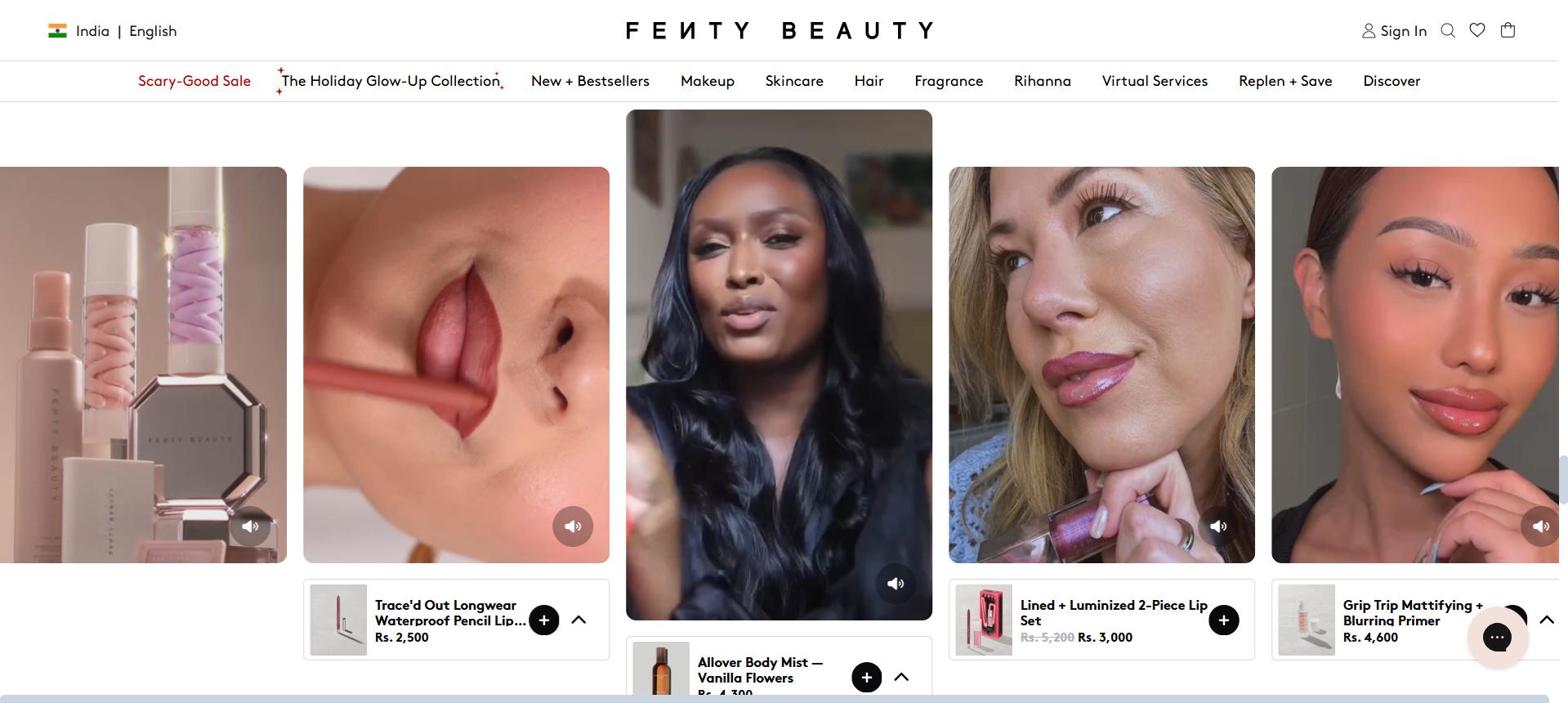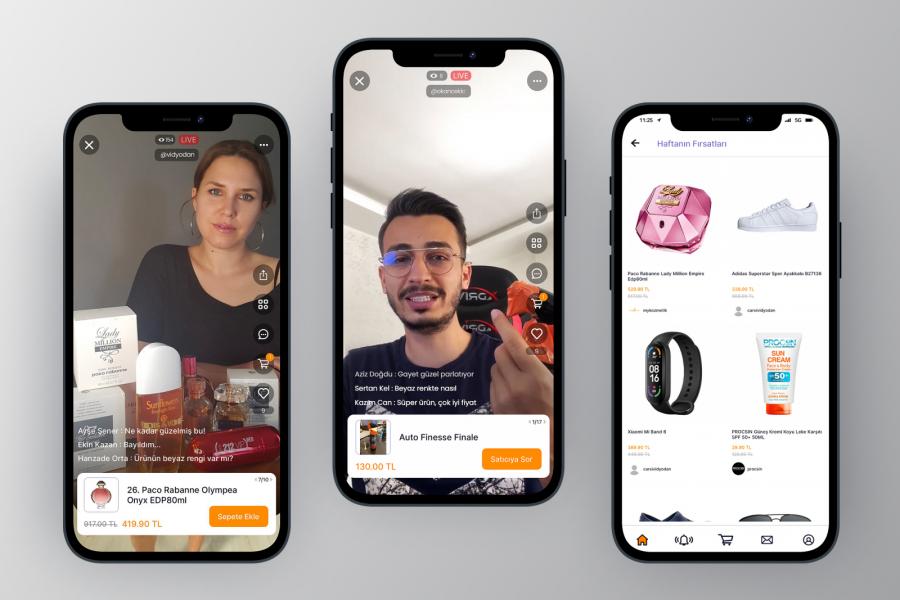What is a Shoppable Video? Examples, Types & Best Practices

Browsing through multiple static images to understand a product is a high-friction experience. Today's consumers demand a more vivid, engaging showcase - whether for apparel, gadgets, or vehicles - complete with a direct, clickable path to checkout.
A late 2024 Wyzowl survey found that 87% of people are convinced to buy a product or service after watching a video. Brands worldwide are capitalizing on this preference by evolving their video marketing into shoppable video commerce.
This format has become crucial for any brand aiming to drive sales and capture attention in today's highly competitive market. These videos capitalize on the growing demand for effortless connection and instant gratification, shrinking the path to purchase from minutes to moments. Let’s explore shoppable videos in detail and show you how to maximize their potential.
What is a Shoppable Video?
A shoppable video is an interactive video that includes purchase links so viewers can get a detailed view of the product and buy it directly. Such videos include pop-ups, product tags, or clickable links, which customers can use to shop while they’re viewing the content.
These videos can appear on social media platforms such as Instagram and YouTube, as well as on e-commerce platforms. E-commerce businesses can conveniently showcase their products on these popular platforms to reach a wider audience.
Shoppable Videos vs Traditional Product Videos
Traditional product videos showcase a product’s features, use cases, and benefits, but without embedded purchase links. So, customers can’t directly purchase a product while watching a traditional video. This marked difference between the two formats gives rise to more significant differences:
Why Shoppable Videos Matter for E-Commerce Brands: Key Benefits
More and more customers are preferring interactive experiences nowadays, which is why shoppable videos are an effective way to turn engagement into sales. Here are some key benefits:
- Frictionless Purchase Experience: Shoppable videos don’t require buyers to navigate multiple pages to make a purchase. Their shopping journey becomes much more convenient, with direct buying options integrated into rich video content.
- Higher Engagement and Conversion Rates: The interactive content in shoppable videos makes purchasing easier and more enticing for buyers, enabling them to find and buy products in less time. This reduces the chances of them losing interest and increases conversion rates.
- Deeper Consumer Insights from Video Interactions: Shoppable videos provide brands with granular analytical data, including hotspot click-throughs, engagement rates, and detailed viewer behavior. This delivers crucial insights into consumer buying patterns, allowing brands to optimize future campaigns and product strategy.
- Stronger Brand Storytelling and Customer Loyalty: Shoppable videos let consumers enjoy authentic, entertaining video content that drives them to buy the product rather than just passively watching. These videos also take a customer-first approach, helping turn satisfied customers into brand advocates.
Typical Shoppable Video Types (with Examples)
Most of today’s brands are trying their best to make video advertising more immersive. Shoppable videos bridge that gap between inspiration and purchase. The key formats of these videos that offer unique ways to combine storytelling with convenience and engagement:
1. Pre-Recorded Interactive Videos on Websites & Apps

As the name suggests, these videos combine pre-recorded content on one or more products with a range of interactive elements, such as product icons, cart links, or pop-ups that link to the product page. These are embedded on apps and websites, and let customers make purchases at their own convenience, unlike live shopping.
One of the best examples of brands showcasing pre-recorded interactive videos is Fenty Beauty, which displays engaging, high-quality testimonial videos of its products on its official website.
2. Social Platform Shoppable Video

Social media platforms, such as TikTok, Instagram, and YouTube, often integrate these shoppable videos for a wider audience reach. Such videos incorporate clickable buttons, links, or tags to turn passive scrolling into an active shopping experience.
3. Live-Stream Shopping with Embedded Purchase Links

These real-time, interactive videos feature hosts discussing products, with integrated clickable elements and live chat. They often showcase exclusive product launches or limited-time deals, creating a sense of urgency that drives immediate clicks and purchases.
4. User-Generated and Creator-Led Shoppable Content

When interactive purchase links are added to authentic video content by non-brand entities or people, viewers get a seamless buying experience. User-generated content features real customers sharing their stories and experiences, helping build trust while driving conversions.
5. AI-Generated Shoppable Content

This is a rapidly emerging category where videos are automatically generated, edited, and optimized using Generative AI tools. Instead of relying on traditional production crews, AI uses product feeds, existing images, and short text prompts to craft full, on-brand video narratives. The resulting videos are instantly ready for interactive elements like hotspots and purchase links. This method is highly scalable and cost-efficient, allowing brands to produce thousands of personalized video variations quickly - a feat impossible with traditional video production.
How Shoppable Videos Work
Once marketers have created the video content after a series of creative processes and editing sessions, they move on to the technical stage that makes videos “shoppable”. Here’s a round-up of how the process works:
Product Tagging and Hotspot Integration
The first phase of the integration connects specific products in the video to their corresponding data, transforming the video into an interactive online store.
- Brands use a suitable commercial platform to upload their product videos and an entire catalog.
- Each video includes interactive hotspots like clickable areas that act as links. When viewers tap or click on the hotspot, a pop-up window appears to show them the product details.
- Each hotspot is tied to a specific product, and dynamic information like inventory, price, and reviews also shows up in an overlay within the video.
- These hotspots can also be used for other options, such as “Shop the Fit,” which lets users browse products that are part of an outfit.
Catalog Sync and Checkout Connectivity
The video platform is then linked to the online store's back-end systems to ensure a smooth, accurate buying process.
- Commercial video platforms are connected to e-commerce platforms such as WooCommerce and Shopify via plugins or APIs.
- The product library on the video platform is synced with the e-commerce catalog of a brand. So, when a product is added, removed, or updated in the catalog, the change is reflected in the video content.
- The moment a viewer clicks on “Shop now” or “Add to Cart” in a shoppable video, the product is directly added to the shopping cart. On some platforms, a one-click checkout process is allowed, further reducing friction in the buying journey and making it less likely for buyers to abandon their carts.
Real-Time Inventory, Pricing, and Cart Linking
Every change in a buyer’s activity on the video platform is reflected in the product's cost and availability.
- The platform draws live data for every product to display its price and stock levels in the video overlay.
- When a product goes out of stock, the platform greys out or removes the “Add to Cart” option.
- With a click on a tagged product, it is added to a buyer’s shopping cart linked to the e-commerce platform of the store. The buyer can continue browsing or proceed directly to the checkout stage.
Analytics Tracking for Clicks, Views, and Conversions
Brands need detailed analytics to understand what works for their business and optimize a future campaign based on such insights.
- A shoppable video platform can track metrics such as view-through rate (VTR), engagement rate, and view count. This shows how audiences interact with the video through shares, likes, and clicks.
- The click-through rate (CTR) is the percentage of users who click on a call to action or shoppable hotspot. The higher the CTR, the more effective the video content and product tagging.
- The return on ad spend (ROAS) and conversion rate are critical metrics because they show how effectively videos drive sales and revenue.
- To understand how customers interact in the long term, businesses can use more advanced techniques, such as cohort analysis and A/B testing of different video elements.
Best Practices for Creating Impactful Shoppable Videos
It’s a major challenge to keep customers engaged in today’s marketing landscape, where the average video attention span is just 47 seconds. Here are some best practices you can follow to create highly impactful shoppable videos:
- Optimize for Mobile Viewers: Data shows that 75% of global video consumption occurs on mobile devices, underscoring the need for businesses to engage customers with mobile-optimized content. Thus, it’s essential to use square or vertical formats to cover the screen, create short, engaging content, and create large, easy-to-tap interactive elements.
- Use Storytelling with Clear Calls-to-Action: People are easily drawn to stories, which is why storytelling in shoppable videos helps build trust and creates a personal connection with the viewer. For instance, a video that shows how a product solves the viewers’ problems or fits into their lives is more likely to appeal to them.
- Tag Products Early and Keep Interactions Natural: Tagging products early in a shoppable video ensures viewers don’t have to wait after they decide to make a purchase. This way, brands can capture impulse buys and increase conversions.
- Offer Seamless Checkout within the Video: A smooth in-video checkout helps convert an engaged audience into buyers by removing friction and delivering a satisfying customer experience.
- Continuously Test and Refine Based on Data: With real-time data on viewers' behavior and feedback, brands can identify storytelling techniques and content formats that truly work. Also, they can understand product preferences by tracking click-through metrics and then focus on promoting the most popular products.
Common Challenges and Pitfalls with Shoppable Videos
No matter how engaging a shoppable video might be, even a minor hiccup in the technical setup can ruin the viewer experience. Issues like missed performance tracking and tagging mistakes can cause customers to lose interest and, in turn, hurt conversions.
- Slow Loading and Performance Issues: A slow-loading video is a critical failure point in e-commerce, hindering the purchasing journey and leading viewers to abandon the content before they even engage. Optimal performance is essential because friction at this stage directly translates into high drop-off rates and lost revenue.
- Poor Hotspot Placement or Unclear Interactivity: If the interactive hotspots or calls-to-action in the video aren’t clearly visible or are placed at points viewers might miss, they are far less likely to generate clicks and conversions. Viewers should instantly recognize where and when they can interact to buy.
- Weak Integration Between Video and Catalog: When a product click opens the wrong page or one with missing details, it can frustrate buyers. Poor synchronization between the video and the e-commerce platform can also lead to incorrect stock updates, disappoint customers, and cause a loss in sales.
- Ignored Video Performance Metrics: Not tracking metrics that truly matter, such as click-through rates, return on ad spend (ROAS), and conversion rates, can create a misleading impression of a shoppable video's performance. For instance, a video might score high in views but not be engaging enough for buyers to keep watching and click the purchase link.
- Platform Restrictions or Ad Limitations: Every platform reviews video content that brands upload to ensure it’s in line with its policies and may not approve shoppable features for some videos. A common example is Amazon and Instagram, which place limitations on small businesses' use of shoppable videos in remote regions.
Measuring Success & Performance Metrics in Shoppable Videos
When it comes to marketing through shoppable videos, success is mainly about understanding what drives viewers to engage with the content and buy the products. You must combine tracking the right metrics with understanding behavioral patterns to convert storytelling into real growth.
Strategies for Using Shoppable Videos Across Website, Email and Mobile
- Shoppable Videos on Product Pages (PDP Stories): Add product-specific videos to every PDP to provide social proof, increase confidence, and boost conversion. These videos show the product in action and deliver the exact information customers seek before making a purchase decision.
- Shoppable Video Carousel on the Homepage: Feature a video carousel on your homepage to help visitors discover new products, increase click-through rates, and strengthen brand connection. Shoppable videos make the homepage more dynamic, engaging, and visually representative of your brand.
- Shoppable Videos on Landing Pages: Use videos to tell your brand story and engage visitors coming from ads or social channels. Shoppable videos make it easier for users to understand the product and make quick buying decisions.
- Shoppable Videos on Collection Pages (PLPs): Enhance collection pages with shoppable videos to make browsing more dynamic, highlight special offers, and improve product discovery.
- Shoppable Video Feed on Mobile Apps: Add a branded, TikTok-style video feed to your mobile app to boost engagement and drive native product discovery in a familiar, scrollable format.
- Shoppable Videos in Email Flows: Incorporate shoppable videos as GIFs within email flows to capture attention and increase CTR, delivering engaging content without affecting deliverability.
How to Create a Shoppable Video with Tolstoy
Interactive video ads are no longer a tool for just studios or large teams. With platforms such as Tolstoy, brands of all sizes can turn their videos into experiences that drive customers to act. Tolstoy’s AI Commerce platform offers three core solutions: the AI Player (for shoppable video feeds), the AI Studio (for video creation), and the AI Shopper (for personalized sales chat).
- Turn Any Video Into a Shoppable Experience: Marketers can upload a video directly in the app or import videos from sources like Instagram, TikTok or Google Drive. Tolstoy allows simple ways to match videos to a brand's product catalog to identify and tag the products in the content.
It also offers AI Studio, allowing brands to generate on-brand product images and videos directly from their catalog.
- Embed Product Cards and Real-Time Analytics: The app's admin makes it easy to tag specific products, down to the variant level, in every video. Marketers can choose either visible in-video shopping carts or clickable product cards as the purchase links.
- Integrate Seamlessly with Shopify, Klaviyo, and Tapcart: The app syncs automatically with these e-commerce platforms, ensuring the brand’s inventory, products, and checkout flow work smoothly alongside the shoppable videos.
- Track Conversions, Engagement, and ROI in One Dashboard: The Tolstoy app's comprehensive dashboard lets brands monitor viewer retention, click-through rates, and video completion rates. It also tracks revenue to each shoppable video by monitoring its add-to-cart clicks and purchases. Also, detailed data on engagement and revenues lets marketers clearly understand the return on their video content.
Conclusion
Shoppable videos offer an exciting marketing potential for any brand, but only when they’re done right. With clear goals, smooth integration with e-commerce platforms, and engaging storytelling, they can add scores of active customers in seconds. Brands can easily use them to build trust and deliver an effortless, memorable, and personal experience to customers.
Thus, this video format signals a shift toward more humanized forms of digital marketing. Now, the focus is on creating meaningful brand experiences rather than just selling products.
FAQs
Shoppable videos improve engagement by:
- Allowing users to buy products directly from links embedded in the content.
- Turning passive viewing into an interactive, immediate shopping experience.
- Removing the friction that exists in traditional video ads, which require viewers to navigate away to a product page.
Industries that benefit most from the shoppable video format are those whose products require visual demonstration or contextual storytelling to drive interest:
- Beauty and Cosmetics: Showing application and results.
- Fashion and Apparel: Demonstrating fit, style, and movement.
- Home Equipment/Decor: Highlighting usage, scale, and placement.
- Electronics/Gadgets: Providing practical demonstrations of features.
Tolstoy simplifies the creation and publishing process by:
- Importing videos automatically from social media (Instagram and TikTok) or internal sources (Google Drive, Dropbox, etc).
- Offering AI automation to tag products instantly.
- Allowing seamless integration with existing e-commerce platforms like Shopify, removing complex coding requirements.
- Offering a variety of templates and layouts to publish videos on your website, mobile app, and email flows.
- Allowing video publishing at scale, across thousands of web pages with a single implementation.
Yes, Tolstoy provides real-time tracking of engagement and conversions through its analytical dashboard. Brands can monitor key metrics instantly, including:
- Viewer engagement, play rate, and video completion rates.
- Click-through rates (CTR) on product cards inside shoppable videos.
- Direct purchases and revenue linked back to specific video content.
The AI commerce era is here!
Ready to accelerate
your brand?
Table of contents
More stories

3 Best Shopify Themes With Video Headers
Video headers are a great way to capture the attention of potential customers. Check out three Shopify themes with video headers to choose from for your store.



